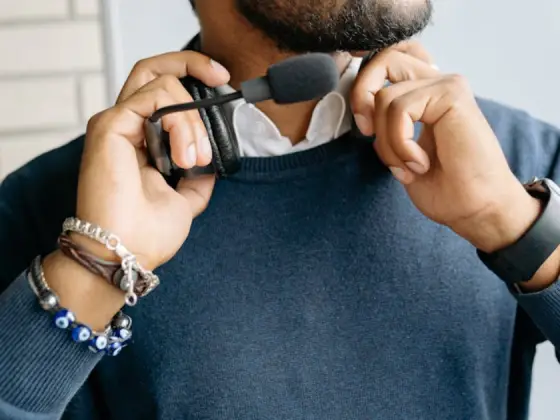Choosing the perfect gift for a child can be both exciting and challenging. Whether it’s for a birthday, holiday, or special occasion, finding the best ways to gift a child requires careful consideration and thoughtfulness. In today’s fast-paced world filled with endless options, it’s essential to navigate through the noise and focus on what truly matters—bringing joy and happiness to the little ones in our lives. In this comprehensive guide, we’ll explore various strategies and ideas to help you master the art of gifting children. From understanding their interests to selecting age-appropriate presents, we’ve got you covered with practical tips and insights to make every gift-giving occasion a memorable one.
Best Ways to Gift a Child That Foster Joy and happiness
Understanding the Child’s Interests:
Before you start to look for the perfect gift, take some time to understand the child’s interests and preferences. Whether they’re into dinosaurs, princesses, superheroes, or arts and crafts, knowing what captures their imagination can guide you in selecting a gift that resonates with them on a deeper level. Here are some ways to uncover their interests:
- Observation: Pay close attention to the child’s daily activities, hobbies, and interactions to identify recurring themes or topics of interest. Observe how they spend their free time and what toys, games, or activities they gravitate towards. For example, if you notice that they always reach for books about animals or enjoy playing with toy cars, it’s a clear indicator of their interests. Additionally, observe their reactions to different stimuli, such as movies, TV shows, or outings to amusement parks. These observations can provide valuable insights into what captures their imagination and brings them joy.
- Ask Questions: Engage the child in meaningful conversations to learn more about their likes and dislikes. Simple questions like “What’s your favorite movie?” or “Who is your favorite superhero?” can spark interesting discussions and reveal valuable information about their interests. Encourage them to share stories, experiences, and preferences, and listen attentively to their responses. Additionally, ask open-ended questions that prompt them to express their thoughts and feelings, such as “What do you enjoy doing on weekends?” or “If you could choose any toy in the world, what would it be?” By actively listening to their responses, you can gain deeper insights into their personality and preferences.
- Consult with Parents: Reach out to the child’s parents or guardians for guidance and suggestions when selecting a gift. Parents often have valuable insights into their child’s interests, preferences, and developmental stage. They can provide valuable input based on their knowledge of the child’s personality, likes, and dislikes. Ask them about the child’s favorite activities, hobbies, and toys, as well as any specific preferences or restrictions they may have. Additionally, inquire about any upcoming events or occasions that may influence your gift selection. By consulting with parents, you can ensure that your gift is thoughtful, appropriate, and well-received by the child.
Age-Appropriate Gifts:
When selecting a gift for a child, it’s crucial to consider their age and developmental stage. What may be suitable for a toddler may not necessarily be appropriate for a teenager. Here’s a breakdown of age-appropriate gift ideas:
Infants and Toddlers (0-2 years old):
Preschoolers (3-5 years old):
Preschoolers are full of imagination and creativity, eager to explore the world around them through play. Here are some detailed suggestions to encourage their development and foster their imagination:
- Toys for Imaginative Play: Spark their creativity and storytelling skills with toys that inspire imaginative play and role-playing. Dolls, action figures, and plush toys allow preschoolers to create their own narratives and act out scenes from their favorite stories or movies. Building blocks, construction sets, and magnetic tiles encourage open-ended play and help develop fine motor skills and spatial awareness. Dress-up costumes and pretend playsets allow children to explore different roles, identities, and scenarios, fostering social skills and empathy.
- Educational Toys: Promote early learning concepts such as numbers, letters, shapes, and colors with educational toys designed specifically for preschoolers. Look for puzzles, sorting games, and matching activities that reinforce these foundational skills in a fun and interactive way. Alphabet and number blocks, flashcards, and board games introduce preschoolers to letters, numbers, and basic math concepts through play-based learning. Additionally, consider toys that encourage creativity and self-expression, such as playdough, crayons, markers, and coloring books, which develop fine motor skills and artistic abilities.
- Outdoor Play Equipment: Encourage physical activity and exploration with outdoor play equipment designed for preschoolers. Climbing structures, slides, swings, and sandboxes provide opportunities for active play and gross motor development while fostering independence and confidence. Ride-on toys such as tricycles, balance bikes, and scooters improve coordination, balance, and spatial awareness. Water tables, gardening kits, and nature exploration tools allow preschoolers to engage with the natural world, promoting curiosity, observation, and sensory exploration.
- Social and Emotional Learning Toys: Support social and emotional development with toys that encourage cooperation, communication, and empathy. Cooperative games, group puzzles, and board games promote teamwork, turn-taking, and problem-solving skills, while nurturing positive social interactions and friendships. Dollhouses, play kitchens, and toy animals offer opportunities for imaginative play and storytelling, helping preschoolers develop empathy, compassion, and understanding of others’ perspectives. Additionally, consider toys that teach emotional regulation and self-expression, such as emotion dolls, feeling flashcards, and storytelling cubes, which help preschoolers identify and articulate their feelings in a safe and supportive environment.
School-Age Children (6-12 years old):
As children enter the school-age years, they become more independent and curious about the world around them. Here are some detailed suggestions to foster their creativity, curiosity, and love of learning:
- Educational Toys: Engage school-age children in hands-on learning experiences with educational toys that spark their curiosity and encourage exploration. Consider puzzles, building sets, and construction toys that promote problem-solving skills and spatial awareness. Science kits, STEM toys, and coding robots introduce children to scientific concepts, engineering principles, and technology in a fun and interactive way. Look for educational toys that align with their interests and hobbies, whether it’s dinosaurs, space, animals, or vehicles.
- Art Supplies: Inspire their artistic expression with a variety of art supplies that allow them to unleash their creativity and imagination. Stock up on drawing materials such as crayons, markers, colored pencils, and sketchbooks for doodling and sketching. Explore different painting techniques with watercolor paints, acrylic paints, and paintbrushes. Clay, modeling dough, and craft kits offer endless opportunities for sculpting, molding, and crafting. Encourage children to experiment with mixed media, collage, and printmaking to create unique works of art.
- Outdoor Games and Toys: Promote physical activity and social interaction with outdoor toys and games that encourage children to play and explore in the great outdoors. Bikes, scooters, rollerblades, and skateboards provide hours of fun and exercise while improving balance, coordination, and motor skills. Sports equipment such as basketball hoops, soccer goals, and baseball bats allows children to practice their athletic abilities and teamwork skills. Additionally, consider classic outdoor games like jump ropes, hula hoops, and frisbees that promote active play and healthy competition.
- Interest-Based Gifts: Consider gifts that cater to their specific interests and hobbies, whether it’s music, sports, technology, or nature. For music enthusiasts, consider musical instruments, music lessons, or tickets to a concert or music festival. Sports enthusiasts may appreciate sports equipment, sports jerseys, or memorabilia from their favorite teams. Tech-savvy children may enjoy gadgets such as digital cameras, drones, or virtual reality headsets that allow them to explore new technologies and experiences. Nature lovers may benefit from outdoor exploration kits, birdwatching guides, or gardening tools that foster a deeper connection with the natural world.
Teenagers (13+ years old):
Teenagers have diverse interests and preferences, so consider gifts that align with their individual tastes and hobbies. Here are some detailed suggestions to help you choose the perfect gift for the teenager in your life:
- Books: Encourage their passion for reading with bestselling novels, graphic novels, or magazines that cater to their interests. Consider gifting them a subscription to a book club or a series of books by their favorite author. If they enjoy fantasy or science fiction, look for popular series like Harry Potter or The Hunger Games. For non-fiction enthusiasts, explore topics such as history, science, or biographies of their favorite celebrities or role models.
- Electronics: Electronic gadgets are always a hit with tech-savvy teenagers. Consider gifting them a smartphone, tablet, or laptop to help them stay connected with friends, access educational resources, and explore their interests online. Other popular electronics include headphones, portable speakers, or a smartwatch that tracks their fitness goals and notifications. For gaming enthusiasts, a gaming console or the latest video games can provide hours of entertainment and excitement.
- Sports Equipment: For teenagers who love staying active and playing sports, consider gifting them sports equipment or workout gear to support their fitness goals. Whether it’s a new basketball, soccer ball, tennis racket, or skateboard, sports equipment encourages physical activity and healthy competition. Additionally, consider accessories such as water bottles, gym bags, or athletic clothing that keep them comfortable and stylish during workouts and games. If they have a favorite sports team, consider gifting them official merchandise or tickets to a live game for an unforgettable experience.
- Fashion Accessories: Fashion-conscious teenagers may appreciate trendy clothing, accessories, or beauty products that reflect their personal style. Consider gifting them statement pieces such as a stylish backpack, sunglasses, or jewelry that elevate their look and express their individuality. Other popular gifts include hats, scarves, watches, or a fashionable wallet. For beauty enthusiasts, consider makeup palettes, skincare sets, or perfume that help them look and feel their best.
Personalized and Thoughtful Gifts:
One of the best ways to gift a child is to add a personal touch that reflects your relationship with them. Whether it’s a handmade craft, a custom-made keepsake, or a heartfelt letter, personalized gifts can convey love and appreciation in a meaningful way. Here are some ideas to inspire you:
Customized Gifts: Create a personalized gift with the child’s name, photo, or special message to make them feel truly special and cherished. Consider a custom-made puzzle featuring a picture of the child’s favorite cartoon character or a storybook where they are the main character on a magical adventure. Alternatively, opt for a piece of artwork showcasing their name in colorful letters or a personalized growth chart to track their height over the years. These customized gifts not only celebrate the child’s individuality but also serve as treasured keepsakes that they can cherish for years to come.
Experiential Gifts: Instead of material possessions, consider gifting experiences that create lasting memories and strengthen your bond with the child. Treat them to a day at the zoo where they can learn about exotic animals up close, or enroll them in a cooking class where they can unleash their culinary creativity. Alternatively, surprise them with tickets to a live performance or a sporting event that aligns with their interests. These experiential gifts not only provide entertainment and enjoyment but also offer valuable opportunities for learning, exploration, and quality time spent together.
Handmade Creations: Tap into your creative side and craft a handmade gift that showcases your thoughtfulness and effort. Whether it’s a knitted scarf in their favorite color, a photo album filled with cherished memories, or a DIY science kit that sparks their curiosity, handmade creations add a personal touch to your gift-giving experience. Get creative with materials and techniques to tailor your gift to the child’s interests and preferences. Not only do handmade gifts showcase your artistic talents, but they also convey a sense of warmth, care, and love that can’t be replicated by store-bought items.
Create memorable experiences by gifting the best gift
Finding the best way to gift a child involves a combination of understanding their interests, selecting age-appropriate presents, and adding a personal touch. By taking the time to connect with the child and tailoring your gift to their preferences, you can create memorable experiences that foster joy and happiness. Whether it’s a simple toy or a personalized keepsake, the thought and effort you put into your gift will be appreciated and cherished for years to come.




